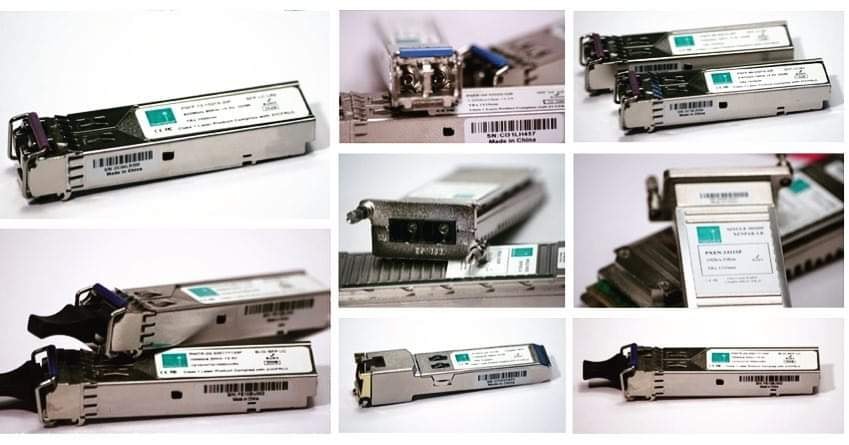There is no shortage of innovation when it comes to transceivers! They’ve been creating new businesses opportunities from the very moment they were invented. Having many forms, from the big GBIC to the now small, compact and speedy SFPDD, these devices offer a variety of speeds, distances and types of connections that allow any company to fully equip and create a durable and efficient network connections.
Here are some of the most notable devices in the history of fiber optics:
1995
THE GBIC
The Gigabit Interface Converter is the first device to offer professionals the needed flexibility for a reduced price, accepting both the old copper wire and the new optical fibers.
2001-2005
THE SFP
The small form-factor pluggable took 6 years to appear, but it made a huge difference in the market. Not only was it smaller, but it managed increase the power the GBIC used to support (with a mere 1.25 Gbs at this time) to 4 Gb over 2 Km. It offered the same flexibility the GBIC did, but with a smarter and an increased no. of connections. It was so efficient that it made the GBIC almost obsolete.
THE XENPAK
Agile Technologies managed to bridge the gap between GBIC and SFP. While respecting the standards of the IEE, the XENPAK raised the transfer speeds to up to 10 Gb’s. However it did not have a major impact in the fiber optic field, since its form was considered to be bulky, especially after the SFP was introduced.
THE XFP
The XFP quickly became the preferred option over the XENPAK, since its design resembled to the SFP and its speed could be compared with the XENPAK’s. XFP can run with a single wavelength or use dense division multiplexing techniques to transport data.
2006-2010
THE SFP+
In 2006 the SFP+ should have allowed transfer speeds of 16 Gbs, but fell a little short of that. Even so, there was a preference of running the SPF+ over the XFP since it’s small size allowed for integration in the already existing design and a pretty hefty upgrade in speed.
THE CFP
CFP allowed speeds of 100 Gbs through the optical fibers, with optical connectors supporting two modes: 10x10Gbs or 4x25Gbs.
2011-2015
THE QSFP+ AND QSFP28
While there are arguably many other forms of QSFPs, the QSFP+ offered the networks the possibility to have both multimode and single mode cables with both transmitters and receivers incorporated and speeds of up to 40 Gbs. The QSFP28 brought 100 Gbs of transfer speed but with the same advantages of the QSFP+.
2015-2022
THE QSFP56
QSFP56 is doubling the data rate achieved by QSFP28 with a top speed of 200 Gbps. QSFP56 does this either by using parallel fibers and 8 x 25G wavelengths or by transmitting 50G over 4 wavelengths.
THE QSFP-DD
QSFP-DD can obtain data rates of up to 800 Gbps and connect to LC and MPO-16
THE OSFP
Fast forward to 2022, the OSFP now supports transfer speeds of 800 Gbs to match the current market needs. Designed first in 2016, the newer model holds 8×100 Gbs speeds per electrical data lanes. With a slightly bulkier design than the QSFP, it should allow backward integration and upgrade any network with ease.
THE SFP-DD
SFP-DD is one of the smallest form-factors enabling data centers to double port density. it supports 2 channels with up to 100G and is backward compatible with both SFP+ modules and cables along with new SFP-DD double density products.
You can always contact us for more information about our products and our prices. Subscribe to our newsletter to find out more about the industry.


